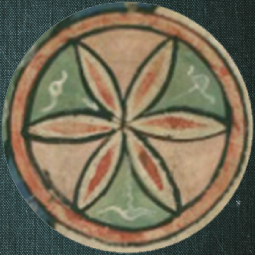Kabbalat Shabbat in Various Traditions
Given the late formation of Kabbalat Shabbat , there is a great deal of variety of form in varying traditions. Roughly, the basic core of Kabbalat Shabbat consists of a compilation of hymns from Psalms, the L’chah Dodi piyut, the Mishnaic passage of Ba’meh Madlikin, and the psalm A hymn of song for the Sabbath day, while different traditions added different components before, during, and after: recitation of Song of Songs, piyutim like Yedid Nefesh and Ana B’ko’ach, the recitation of the Kabbalistic passage from the Zohar, K’gavna, and other additions.
Hymns from Psalms – Some recite all six of the mizmor hymns, each relating to one day of the week, which offers a gradual process of farewell from the passing week. Sephardic traditions add the subsequent mizmor psalm, mizmor le’todah, a psalm of thanksgiving (Psalms, 100), to the given six, reaching seven to match the days of the week. There are traditions that begin Kabbalat Shabbat with Psalm 29, which reflect seven voices ascribed to King David, reflecting the seven days of the week.
Ba’meh Madlikin – There are differences in its positioning within the Kabbalat Shabbat liturgy – some place it prior to the Mincha service, some at the end of Kabbalat Shabbat, some before L’chah Dodi, and some following it. The Ashkenazi Hassidic tradition replaced its recitation with the Kabbalistic section from the Zohar, K’gavna.
Song of Songs – Many traditions prefaced Kabbalat Shabbat with the recitation of Song of Songs. Twilight of the Sabbath Eve is a time of profound pining and longing for the Sabbath bride, which is preparing to arrive and unite with the groom, symbolized by the Jewish people and by God. The Sabbath is a time of love and union between lovers. Song of Songs is the everlasting love song between lovers and reciting it at the onset of the Sabbath stirs and evokes love as union beckons.
Yedid Nefesh – This piyut was composed by Rabbi Elazar Azkari in 16th century Safed, the same space in which Kabbalat Shabbat emerged. In the manuscript, the author had added a headline above the poem: “A supplication for union and the desire of love.” The piyut abounds in love for God, who is referred to in a string of terms of endearment by the lover, whose ‘soul is faint with love.’ In the 1950s, the umbrella organization of Orthodox Zionist kibbutzim in Israel began singing it in its most well-known melody prior to Kabbalat Shabbat. Within a few years, Ashkenzai communities throughout Israel had adopted the practice as well, and rendered it an inseparable part of Kabbalat Shabbat service within their communities, and even beyond them.
Ana B’ko’ach – This piyut is recited following the hymns from Psalms. It is an ancient prayer, attributed to Rabbi Nehunia ben HaKanah, a first century Mishnaic sage. The text consists of seven verses, six words each, forty-two words in total, which form an acrostic whose letters spell out a secret divine name. The name is considered to be a sort of secret code capable of unlocking the source of divine abundance that nourishes the Jewish people and the entire world. Because of its meaning, the piyut has found its way into prayers and occasions with mystical significance.
A hymn of song for the Sabbath day – Psalm 92 is recited following L’cha Dodi, which ends in an invitation to the bride: Come O bride, Sabbath Queen! In some traditions, before the psalm is recited, the beadle calls out: “Blessed is He who offers rest to his people, Israel, on the Holy Sabbath day.” Regardless, as soon as we welcome the Sabbath, we recite and sing this hymn in honor of the Sabbath that has arrived.
In Ashkenazic traditions, the degree to which the ceremony is innovative is indicated by the fact that the cantor leads the prayer from the bimah, normally reserved for Torah reading, rather than from the typical position of the prayer leader, and by the fact that small children are allowed to lead the prayer.
In recent decades, a “Carlebach style” has emerged in many Ashkenazic synagogues, drawing inspiration from the Hassidic world, and introducing spirited song and dance throughout recitation of the psalms and L’chah Dodi, sung to the melodies of Rabbi Shlomo Carlebach.

 Sign in with Google
Sign in with Google
 Sign in with Facebook
Sign in with Facebook

